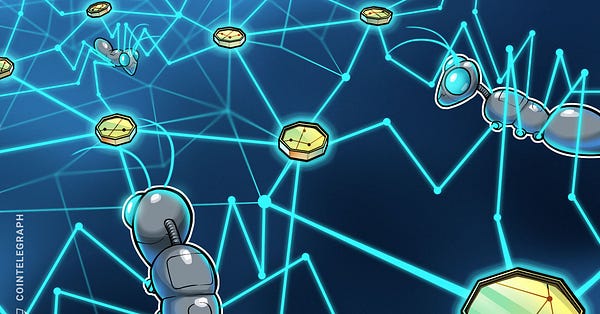Aave's Interest-Bearing aTokens on Matic Network
A quick guide by Pixelcraft Studios CTO Nick Mudge
We recently implemented a custom Ethereum|Matic bridge that moves Aave's aTokens from Ethereum to Matic Network.
When aTokens are sent to Matic Network they are converted into a derivative token called maToken. The m in maToken is for Matic. maTokens work differently than aTokens.
aTokens increase in quantity over time. For example if you have $10 aUSDC it becomes $10.01 over time and continues to increase in quantity.
maTokens don't increase in quantity. Instead they increase in value over time. For example at this moment 9.88 maUSDC is worth $10 USDC. After some time your balance continues to be 9.88 maToken, but you can now sell it for $10.01 USDC in Quickswap. Or you can transfer your maUSDC to Ethereum (and pay Ethereum gas fee) and get 10.01 aUSDC.
aTokens can be transferred from Ethereum to Matic Network using the Aavegotchi bridge website.
You might want to know the USD or aToken value of maTokens. If you have a maToken balance this can be seen on the Aavegotchi bridge website by selecting a maToken. The nature of Quickswap will also reflect the increasing value of maTokens.
The aToken bridge contract has two read-only functions for converting aToken values to maToken values and vice versa. This can be used by UIs to show the increasing aToken values of maTokens.
maTokens can be put in Quickswap pools to earn QUICK rewards, trading fees and Aave interest, all at the same time. maTokens will be used to create and collateralize Aavegotchis, making Aavegotchis grow in value over time. Unlike aTokens, maTokens do not lose interest gains when put in exhanges like Uniswap or Quickswap.
Here's a more technical description of how the aToken bridge works:
When aTokens are sent to Matic, the aTokens are locked in the bridging contract on Ethereum. The corresponding maTokens are minted on Matic Network and transferred to the owner. The aTokens sit in the bridging contract accumulating interest. When/if the maTokens are sent back from Matic to Ethereum then the maTokens are burned on Matic Network and the maToken amount is converted back to the original aToken amount PLUS interest and transferred to the owner.

The maTokens continuously increase in value on Matic Network because they are backed by the increasing aTokens amounts locked in the bridge contract on Ethereum. The maTokens can be converted back to aTokens + interest.
The logos/icons for maTokens use a square outline to distinguish them from the circle outline of aTokens. The maTokens have two outlines around them. One is the blue color of Matic and the other is the red-purple color of Aave.
Learn more about Aave to Matic bridge in the recent Cointelegraph article:


Smart contract details about maTokens and the bridge can be found in documentation here: https://docs.aavegotchi.com/overview/matokens
Follow Nick on Twitter @mudgen for more updates!





Nice work! When I heard you did it, I thought you might have done it in this manner (a bit like protocols like yearn etc where token represent value of underlying pool of assets) as opposed to the tricky increase in supply.
Question for people building on matic and wanting their protocols to generate yield, its possible to swap mDAI (matic DAI?) for maDAI on quickswap I guess, but I can imagine the demand would quickly make this not feasible. If you have mDAI and you want to lend it out on matic, we are still looking for a good solution to this problem right? Since for these dollars to be put to actual work they need to be lent out on the mainnet?
Can I use this ATokens on a Dex without risking my deposite on AAVE?